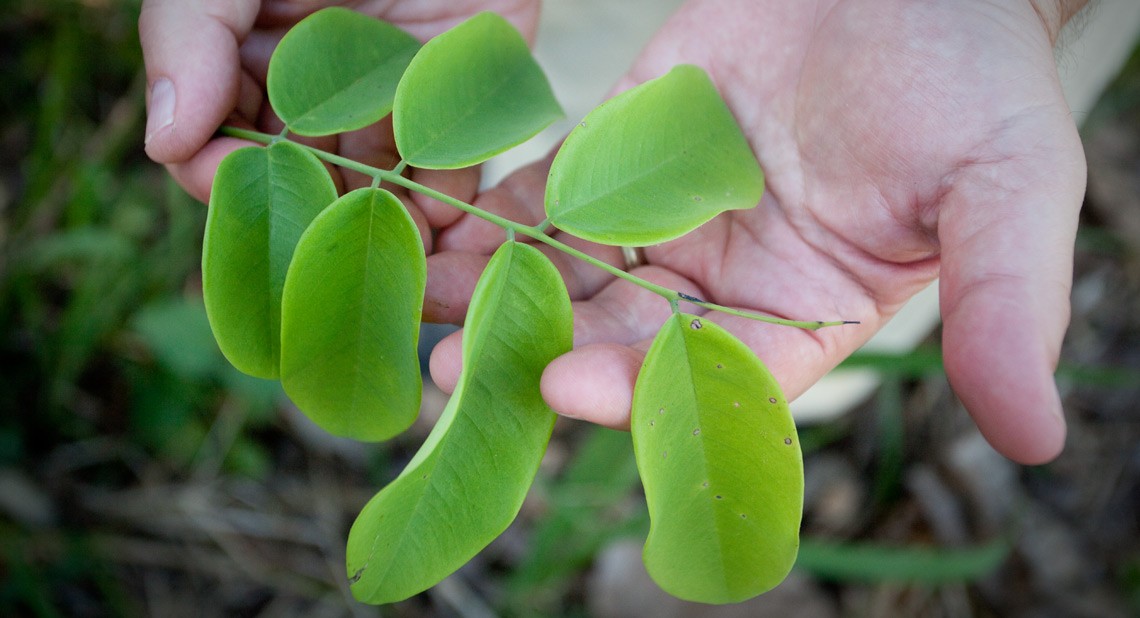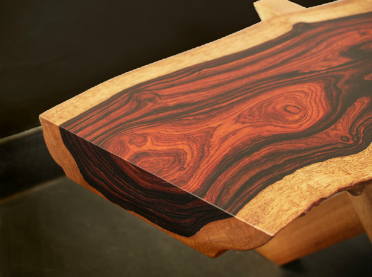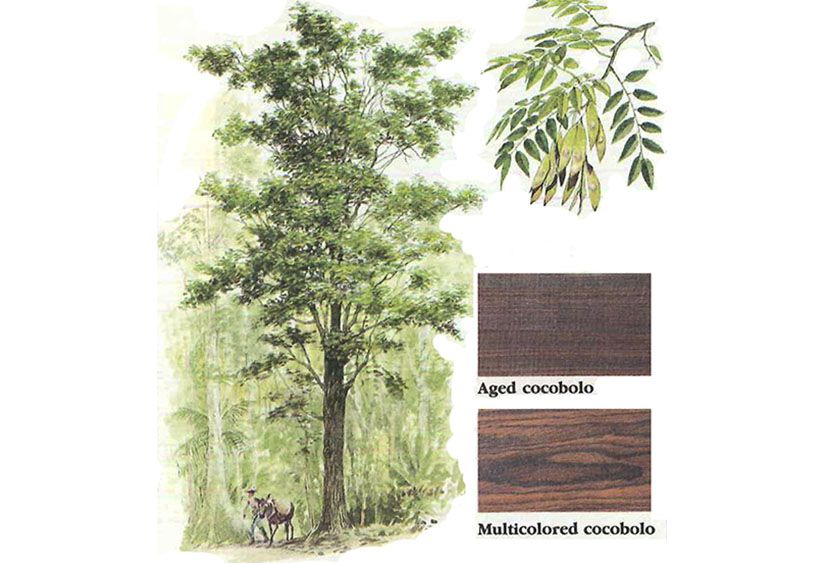The Cocobolo Tree: Critically Endangered

Like several of the trees of the Dalbergia genus, the cocobolo produces a dense, reddish and shiny wood, highly appreciated for the construction of musical instruments, but also used in the manufacture of furniture.

Cross-section of a cocobolo trunk.
In Panama, the excessive extraction of cocobolo to export its wood to China caused Dalbergia retusa populations to be almost extinct. In the jungles of Panama today, finding an adult tree of this species is almost an impossible mission. When adult cocobolos were still seen in the jungle, the Wounaan people used their wood to create staffs that accompanied their healing rituals. Now, they and the Embera people are trying to rescue the populations of this tree. In the Darién jungle, east of Panama City, shades of green intertwine, forming thick foliage. Among the trees that have been uprooted from this jungle, a species stands out that can only be found in Central America, because it does not grow anywhere else in the world: science named it Dalbergia retusa, but in these lands it is known as cocobolo.
In Panama, cocobolo populations have extended throughout the provinces of Coclé, Colón, Darién, Los Santos and in Panama City. Today it is almost an impossible mission to find adult cocobolos in places like the Darién jungle. When a cocobolo is between 40 and 50 years old, it reaches a height of up to 25 meters; Its trunk, with a gray hue on its bark and a reddish interior, can reach 70 cm in diameter. Its small, white flowers sprout in clusters. A slight breeze is enough for its pod to release the seeds that look like crushed beans, chocolate and olive in color. Those who look for this tree in the jungle are not attracted by its flowers and even less so by its seeds. Its fixation is in the trunk, in the heavy wood that has a vibrant reddish tone, with veins that range from dark brown to black, and that shines thanks to its natural oils.

A (rare) adult cocobolo tree.
Several species of the Dalbergia genus are felled without any control to exploit their wood. This has depleted the reduced population to almost nothing. Since 2016, the cocobolo was included on the List of Endangered Flora and Fauna of Panama, as an Endangered species. In 2019, it was added to the Red List of the International Union for Conservation of Nature (IUCN) in the Critically Endangered category, that is, it is one step away from extinction, and in 2024, numbers continue to drastically decline. In the document prepared by IUCN scientists to argue why this tree is critically endangered, it is explained that the reductions caused by illegal logging have been particularly intense in the last six years, “wood extraction is directed at the most vulnerable individuals including the large and mature, which reduces the number of seed trees.” Furthermore, the researchers warn that the capacity for regeneration is also reduced, “as there is less habitat available for the growth and establishment of Dalbergia retusa”.
In Panama alone, its area has decreased by 65%, mainly due to the expansion of agriculture and livestock. “Land use change and international timber trade continue to threaten the species,” say the researchers who made the report for the IUCN. They provide data that allows us to measure how quickly a species can be wiped out: in the last three generations, the population of Dalbergia retusa has decreased by more than 80%.

A guitar made from cocobolo wood.
Cocobolo wood, in addition to having striking reddish tones, is one of the most resistant. Among 115 woods tested, Dalbergia retusa was the second most resistant against termites and fungi, according to information disseminated by the Biomuseo of Panama. For this reason it is also used to decorate the interiors of luxurious vehicles or yachts. This resistance and, above all, the sound it has, led cocobolo wood to also be appreciated by those who build and play guitars or violins.





